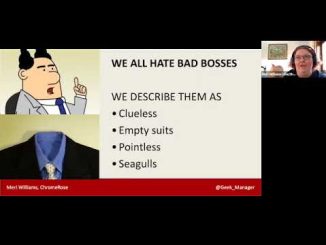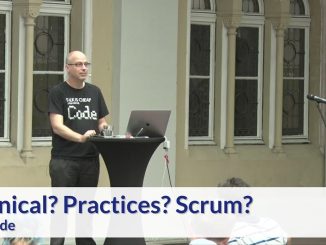Resources on Scaling Agile frameworks like the Scaling Agile Framework (SAFe), LESS, Nexus, Disciplined Agile Delivery (DAD), Scrums of Scrums, etc.
This presentation discusses how to do portfolio planning and prioritization at scale based on experiences within one of the largest banks in The Netherlands. It presents practices that have been developed, shows examples and explains how to plan for short term (< 3 months) and longer term.
I had already very much like the first book written by the same authors “Scaling Lean & Agile Development – Thinking and Organisational Tools for Large-Scale Scrum” published in 2009. The risk when you have high expectations is being disappointed. It wasn’t the case with “Practices for Scaling Lean & Agile Development”.
Having scaled a number of Agile teams at different speeds, this presentation will walk you through some of the inflection points you will experience, how to navigate them, and reflect on all the things the presenter wishes she had known just a little bit earlier.
The Spotify model is a people-driven, autonomous approach for scaling agile that emphasizes the importance of culture and network. The Spotify model champions team autonomy, so that each team (or Squad) selects their framework (e.g. Scrum, Kanban, Scrumban, etc.). Squads are organized into Tribes and Guilds to help keep people aligned and cross-pollinate knowledge.
Although LeSS is an Agile scaling framework, in reality it requires organizational de-scaling. It is also an organizational design framework that helps to address core elements of organizational design: HR policies, finance/budgeting, vendor management, site strategies – areas that are not too comfortable for many companies to address.
As larger organizations started adopting Agile approaches, they looked for framewok that supported scaling Agile. SAFe (Scaled Agile Framework) is one of this framework. This article provides an overview of SAFe.
In this video, Bas Vodde, co-author of “Scaling Lean & Agile Development”, explores whether so-called Scrum “technical practices” are really technical practices and whether LeSS is really Scrum.








